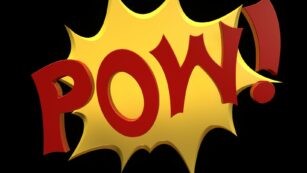Comics have long captivated audiences with their unique blend of visual art and storytelling. From superhero sagas to indie graphic novels, comics offer a diverse range of narratives that engage readers of all ages. The magic lies in their ability to convey complex stories through a combination of images, dialogue, and action-packed sequences, making them a dynamic medium that transcends traditional storytelling.
Each comic is a tapestry woven with distinct features that set it apart. Panels guide the reader’s eye, while speech bubbles and captions deliver dialogue and narration. The artistic style, whether vibrant or subdued, plays a crucial role in setting the tone and mood. These elements work in harmony, creating an immersive experience that draws readers into the world within the pages.
Features Of A Comic
Comics combine visual art and narrative to create a unique storytelling medium. Several key features define this art form:
-
 Panels: Panels frame scenes, guiding the reader through the storyline. These frames vary in size and shape, affecting the pacing and focus of the narrative.
Panels: Panels frame scenes, guiding the reader through the storyline. These frames vary in size and shape, affecting the pacing and focus of the narrative. -
Speech Bubbles: Speech bubbles convey dialogue and thoughts. Their shapes and styles, such as jagged lines for shouting or smooth lines for calm speech, add emotion and context.
-
Artistic Style: Artistic styles range from realistic to abstract, influencing the comic’s tone and mood. Color schemes and line art contribute to visual and emotional impact.
-
Caption Boxes: Captions provide narrative context or commentary. They anchor the reader in time and place within the story.
-
Sequential Art: Sequential art drives the narrative flow. The sequence of images delivers plot progression and character development.
-
 Sound Effects: Words like “BANG” or “WHAM” integrate sound into the visual experience, enhancing action sequences.
Sound Effects: Words like “BANG” or “WHAM” integrate sound into the visual experience, enhancing action sequences.
Understanding these features unveils the depth and creativity inherent in comics, enriching the reading experience.
Visual elements define a comic’s essence by blending artistry and narrative seamlessly.
Artwork in comics establishes the visual tone, impacting reader engagement. Different artistic styles, from realistic to abstract, influence the mood. Every line and stroke contributes to character expression and background detail.
Color Palette
Colors enhance mood and direct reader focus. Bright palettes infuse energy in action scenes, while muted tones evoke introspection. Complementary colors highlight contrasts in characters and settings.
Characterization
Artists convey character traits through visual representation. Distinct features, such as clothing, facial expressions, and posture, reveal personality and motivation without words. Consistent depiction ensures recognizability across panels.
Dialogue and Text
Dialogue in comics appears in speech bubbles, shaping interaction and pacing. Text placement guides reading flow, with font size and style adding emotional weight. Captions offer narrative insights, enriching the storyline context.
Thematic Elements
Comics employ thematic elements that explore diverse concepts and motifs. These themes provide depth and insight, enhancing the connection between the reader and the story.
Genre Influences
 Genre influences shape the themes and motifs within comics. Superhero comics, for instance, often explore justice, power, and identity through iconic characters and narrative arcs. On the other hand, science fiction comics delve into futurism and existential queries, presenting alternate realities and technological advancements. Romance comics highlight love, relationships, and emotional growth, featuring character-driven plots. Horror comics explore fear, survival, and the supernatural, employing tension and suspense. Each genre’s unique themes engage readers and inspire reflective thought.
Genre influences shape the themes and motifs within comics. Superhero comics, for instance, often explore justice, power, and identity through iconic characters and narrative arcs. On the other hand, science fiction comics delve into futurism and existential queries, presenting alternate realities and technological advancements. Romance comics highlight love, relationships, and emotional growth, featuring character-driven plots. Horror comics explore fear, survival, and the supernatural, employing tension and suspense. Each genre’s unique themes engage readers and inspire reflective thought.
Comics offer a rich tapestry of storytelling that transcends traditional literature. Their ability to blend visual art with narrative allows for a diverse exploration of themes that resonate with readers of all ages. Whether it’s the dynamic action of superhero tales or the introspective narratives of indie graphic novels each comic type brings something unique to the table. The creative use of panels speech bubbles and artistic styles not only captivates but also challenges readers to engage deeply with the material. As readers delve into the vibrant world of comics they discover a medium that is as versatile as it is profound offering endless possibilities for storytelling and artistic expression. This fusion of art and narrative ensures that comics remain a beloved and influential part of the literary landscape inviting readers to explore the depths of imagination and creativity.

